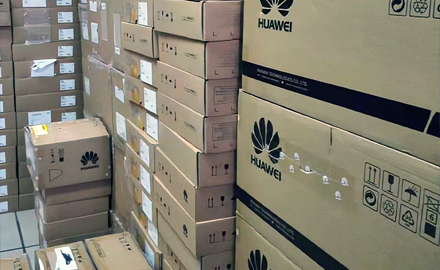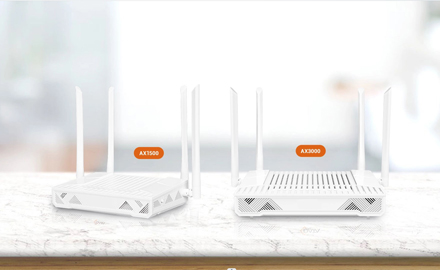Optical Line Terminals (OLTs) play a crucial role in the deployment and operation of Passive Optical Networks (PONs), a technology widely used for delivering high-speed broadband services. OLTs serve as the interface between the core network and the optical distribution network, managing the flow of data to and from multiple Optical Network Terminals (ONTs) at customer premises. The application scenarios of OLTs are diverse, spanning various industries and use cases, each highlighting the benefits of optical fiber technology. In this comprehensive exploration, we will delve into the key application scenarios of OLTs.
1. Residential Broadband Services:
One of the primary applications of OLTs is in residential broadband services. OLTs facilitate the delivery of high-speed internet access to homes through PONs. Fiber-to-the-Home (FTTH) architectures, enabled by OLTs, provide users with unparalleled bandwidth, low latency, and consistent performance. This is particularly critical in the era of streaming services, online gaming, and smart home devices, where reliable and fast connectivity is paramount.
2. Business Connectivity and Enterprise Networks:
In the business sector, OLTs are employed to establish high-performance connectivity for enterprises. Fiber-optic networks powered by OLTs ensure that businesses can access fast and reliable internet services, support cloud applications, and enable seamless communication. The scalability of PONs makes them well-suited for adapting to the evolving needs of businesses, providing a solid foundation for digital transformation.
3. Mobile Backhaul:
OLTs find application in the mobile backhaul network, connecting cell towers and base stations to the core network. With the growing demand for mobile data and the transition to 5G networks, OLTs play a pivotal role in ensuring that the backhaul infrastructure can handle the increased capacity and low-latency requirements. The high bandwidth and reliability of optical fiber make it an ideal choice for supporting the data-intensive demands of mobile networks.
4. Smart Cities and IoT Connectivity:
OLTs contribute to the development of smart cities by providing the necessary infrastructure for connecting various IoT devices. Whether it's smart streetlights, traffic management systems, or environmental monitoring sensors, OLTs enable the deployment of a robust and high-capacity communication network. The low latency and high bandwidth of fiber optics support real-time data exchange, enhancing the efficiency of smart city applications.
5. Educational Institutions:
In the education sector, OLTs contribute to the establishment of high-speed internet connectivity in schools, colleges, and universities. This is particularly important for supporting online learning, video conferencing, and collaborative research initiatives. The reliability and scalability of OLT-based fiber-optic networks ensure that educational institutions can meet the connectivity needs of students and faculty.
6. Healthcare Networks:
Healthcare facilities benefit from OLTs by ensuring reliable and high-speed connectivity for various applications. Telemedicine, digital health records, and medical imaging systems require robust and secure networks. OLTs, in conjunction with PONs, offer the necessary bandwidth and low latency to support these critical healthcare services, contributing to improved patient care and operational efficiency.
7. Video Surveillance and Security:
The surveillance industry leverages OLTs for deploying high-definition IP cameras and video surveillance systems. The high bandwidth of fiber optics allows for the transmission of large amounts of video data without compromising quality. OLTs enable the creation of a secure and scalable network infrastructure, enhancing the capabilities of modern video surveillance and security systems.
8. Government and Public Services:
Governments utilize OLTs to establish efficient and reliable communication networks for public services. Whether it's for municipal services, emergency response systems, or administrative operations, OLTs play a crucial role in ensuring that government agencies can communicate seamlessly. Fiber-optic networks powered by OLTs contribute to the overall resilience and responsiveness of public services.
9. Rural Broadband Connectivity:
OLTs are instrumental in bridging the digital divide by extending high-speed broadband connectivity to rural areas. PONs with OLTs enable cost-effective and scalable solutions for providing internet access in underserved regions. This helps in overcoming the challenges associated with deploying traditional copper-based infrastructure over long distances.
10. Data Centers and Cloud Services:
In the realm of data centers and cloud services, OLTs contribute to the establishment of high-capacity and low-latency connectivity between data centers. Fiber-optic connections powered by OLTs facilitate the rapid and efficient transfer of data between servers, enabling the seamless operation of cloud-based applications and services.
In conclusion, Optical Line Terminals (OLTs) play a pivotal role in a wide range of application scenarios, spanning residential, business, mobile, educational, healthcare, surveillance, government, rural, and data center environments. The versatility, scalability, and reliability of OLT-based Passive Optical Networks (PONs) make them an integral part of modern telecommunications infrastructure, contributing to the advancement of connectivity and technology across various industries. As the demand for high-speed broadband and reliable connectivity continues to grow, OLTs will remain at the forefront of enabling efficient and robust optical communication networks.
 The Difference Between AX1800 ONU and AX3000 ONU
The Difference Between AX1800 ONU and AX3000 ONU
 How are Huawei OLTs Classified?
How are Huawei OLTs Classified?
 The Future Trend of Optical Line Terminals (OLTs)
The Future Trend of Optical Line Terminals (OLTs)
 The Difference Between ONU and ONT
The Difference Between ONU and ONT